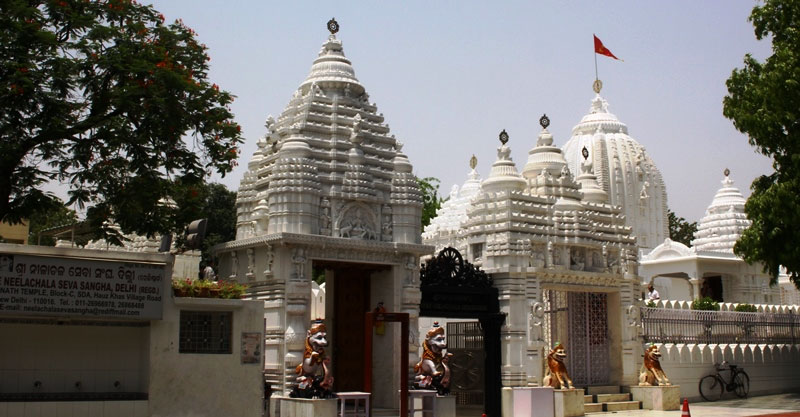
Dedicated to Lord Jagannath, Jagannath Temple is an intimation of that of in Puri, and thus, is one of the prime Hindu religious centers in Delhi, especially for the Oriya community. Situated in Tyagraj Nagar in Hauz Khas, this beautiful temple dates back to 1969. Initially, because of limited resources, a small was built by Sree Neelachala Seva Sangh to commemorate Lord Jagannath, Lord Balabhadra, and Goddess Subhadra. Later in 1991, the reconstruction of the temple started and finally, on 28th January 1999, the present temple was inaugurated. Inside the temple complex, there is also a library that houses a rare collection of religious books. Apart from this, there are also two prasad halls with a capacity of holding 200-300 devotees at a time. At present, this Hindu temple in Delhi serves as an important symbol and cultural hub of the Oriya community residing in the city. Moreover, the temple also proffers an apt insight into the prosperous culture of Orissa. During the morning and evening aarti, “Kshana madhuna Narayana manugatam” mantra is chanted by the devotees and priests.
Rath Yatra is the main festival of Jagannath Temple in Delhi. This yatra is also known as the car festival and is celebrated with great fidelity and devotion. The festival takes place in June, wherein, a chariot holding the idols of deities (Lord Jagannatha along with his brother and sister Lord Balabhadra and Goddess Subhadra) observes a journey to stay in his aunt’s house, which is Shri Gundicha Mandir, for the next nine days. On each of these nine days, Lord Jagannath is treated with all love and devotion, and hence, is being served with food, sweets, and various other religious offerings. Several cultural programs are also organized by the temple committee. On the tenth day, the Lord returns to his temple, which is touted as his abode. Further, there are several shops outside the temple from where you can buy postcards and souvenirs for you and your loved ones.
The architectural design of the Jagannath Temple in Delhi resembles the traditional design of many ancient Orissan temples. Sprawls over an area of 10.7 acres, the entire temple is cladded in white and the main shikhara (tower) rises above the inner sanctum – the place where deities reside. Whereas, the other shikharas rise above ante-halls. Moreover, the main structure of this magnificent temple boasts a height of 214 ft. and has been built on an elevated surface. Besides, there is also a wheel on the top of the temple which is made up of an ashta-dhatu (an alloy of eight metals) and is touted as Nila Chakra. However, an interesting fact to know about the temple is that every day a new flag is tied to a mast placed right to the Nila Chakra. Whereas, on every Ekadasi, a lamp is lit on the top of the shrine.
For more information, visit google. Also, have a look at our various monthly issues.

